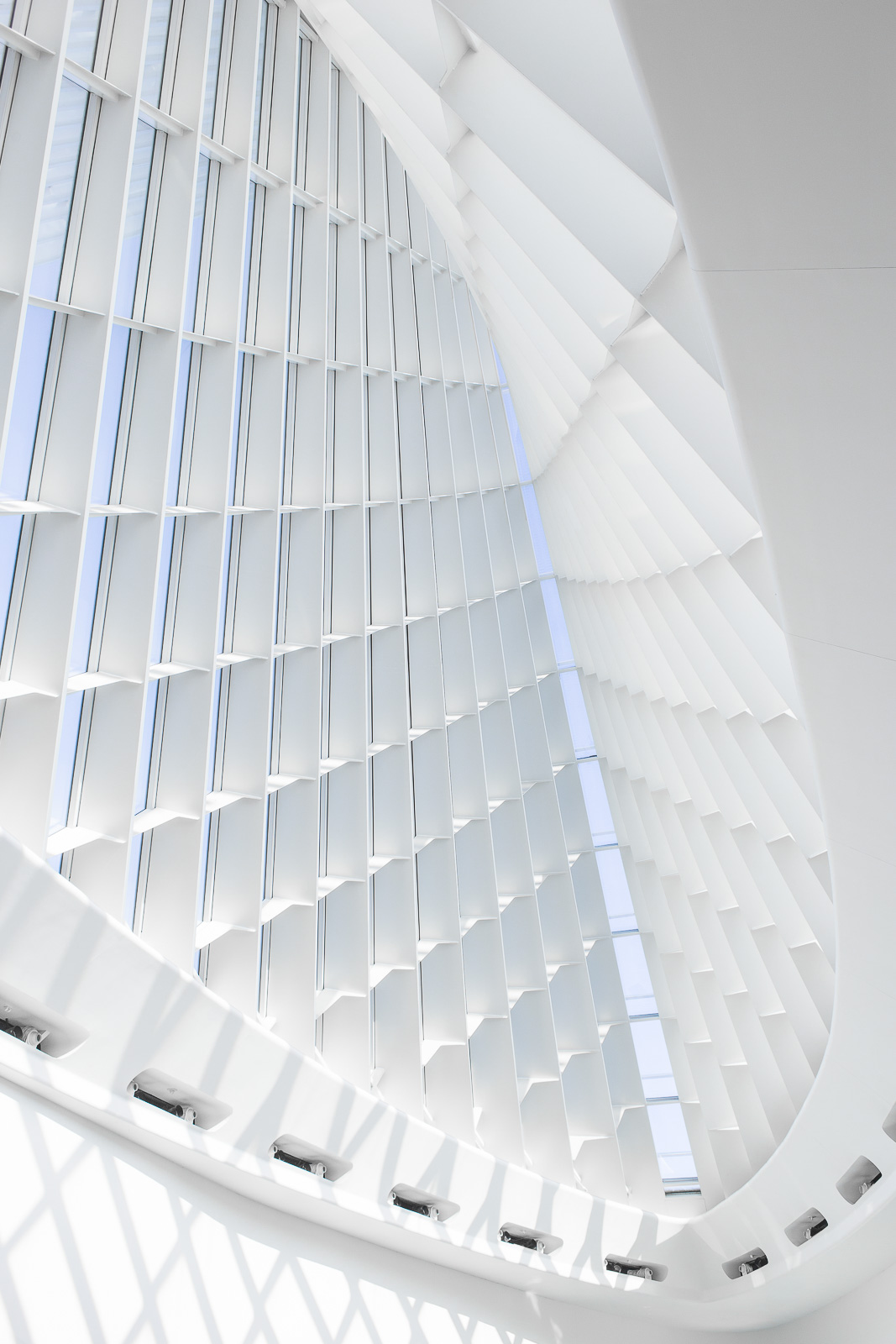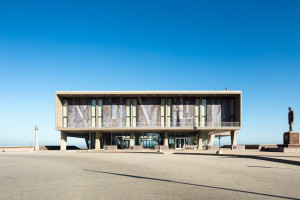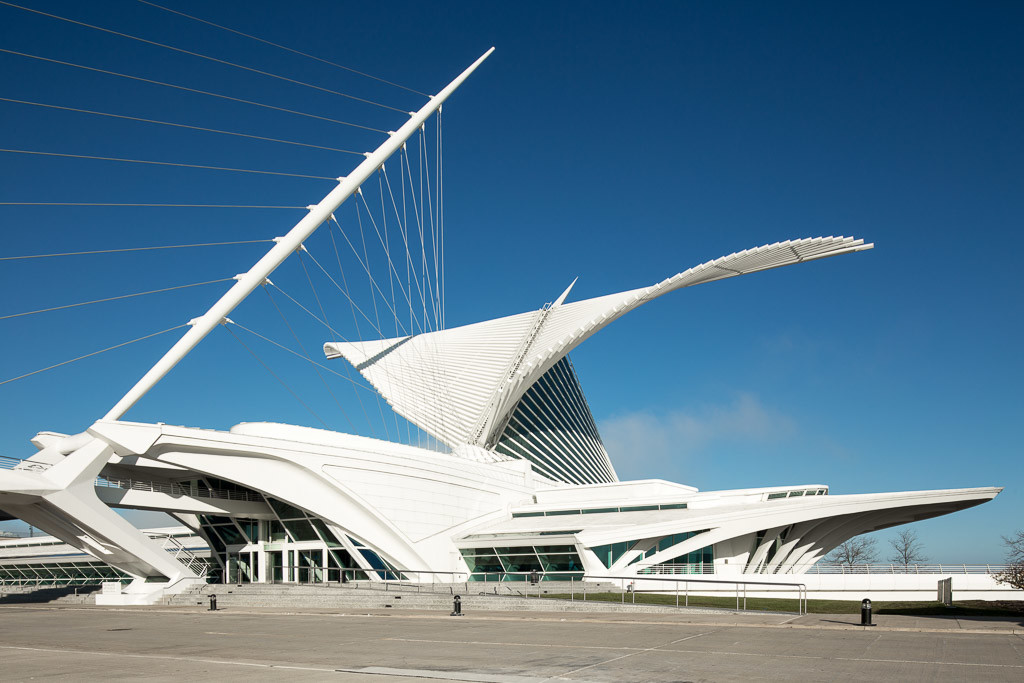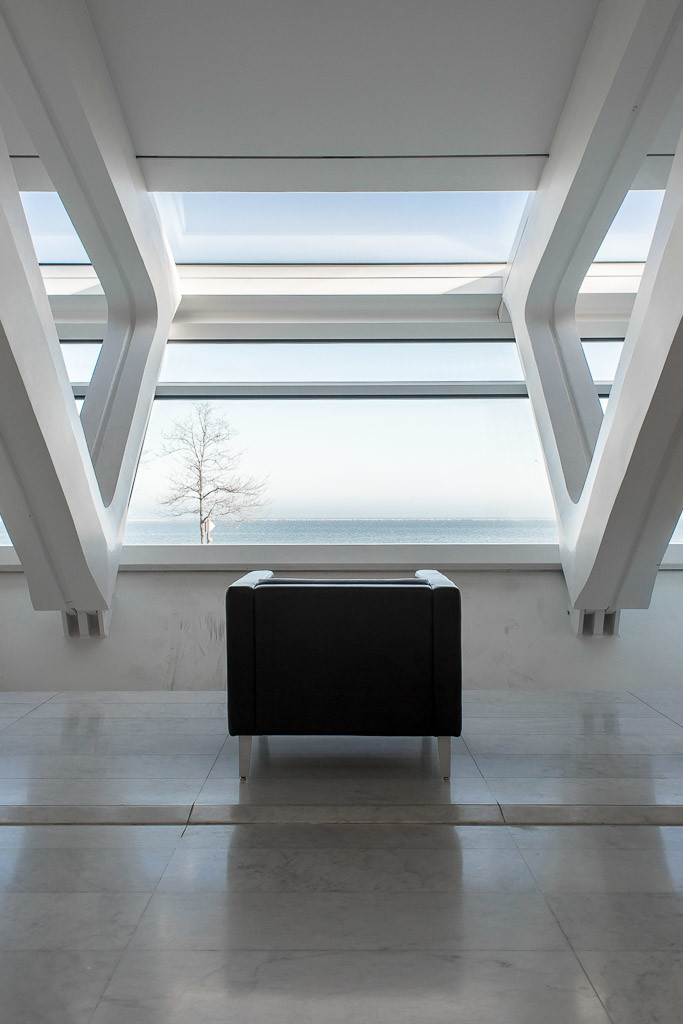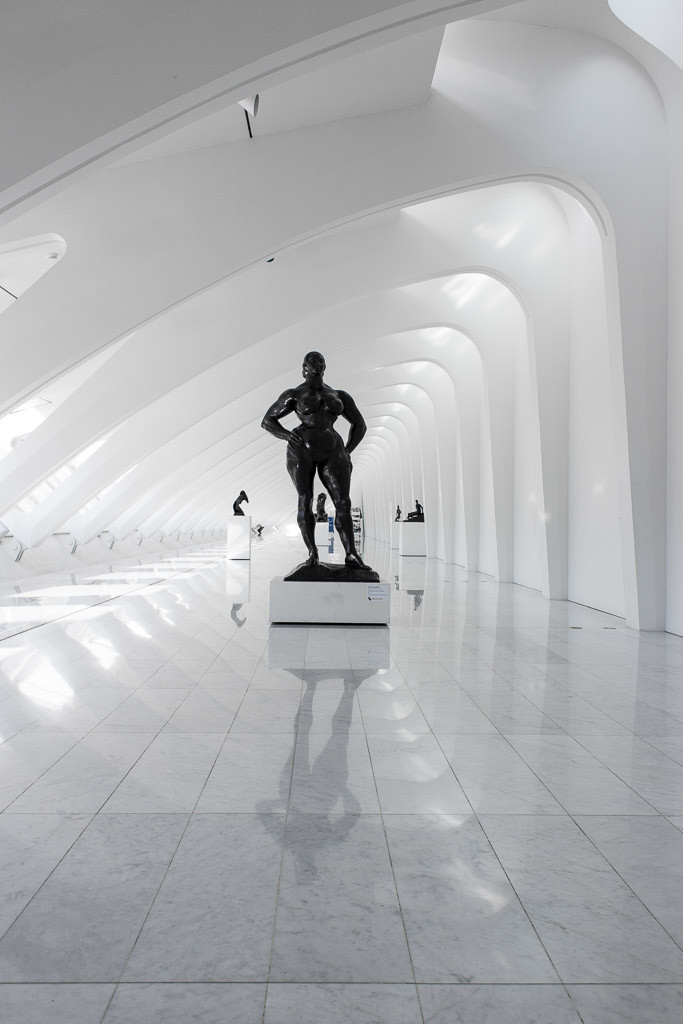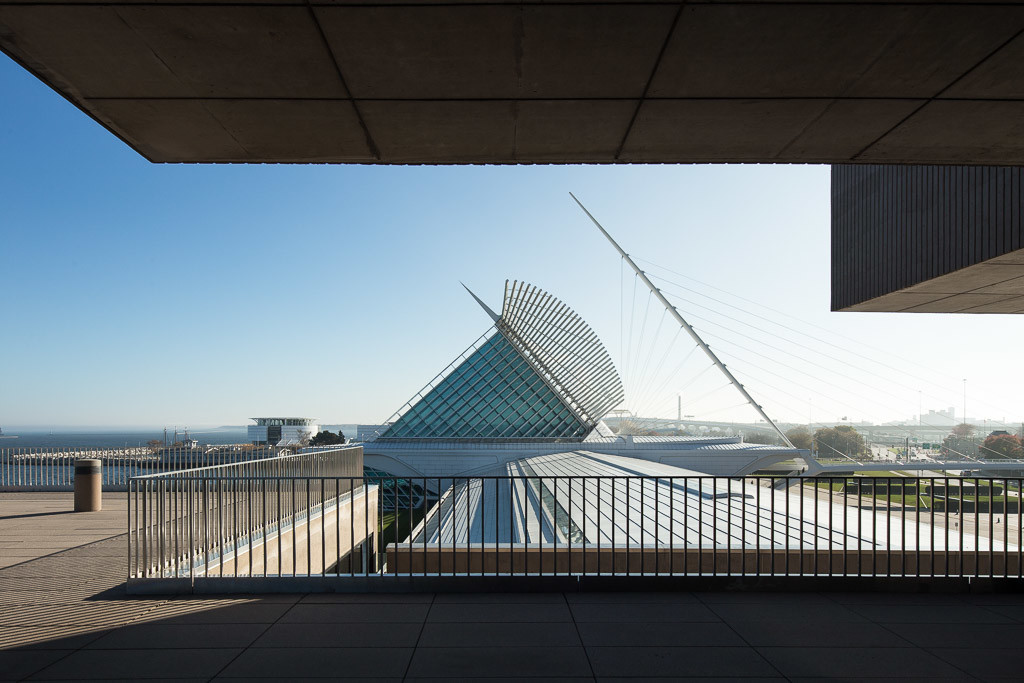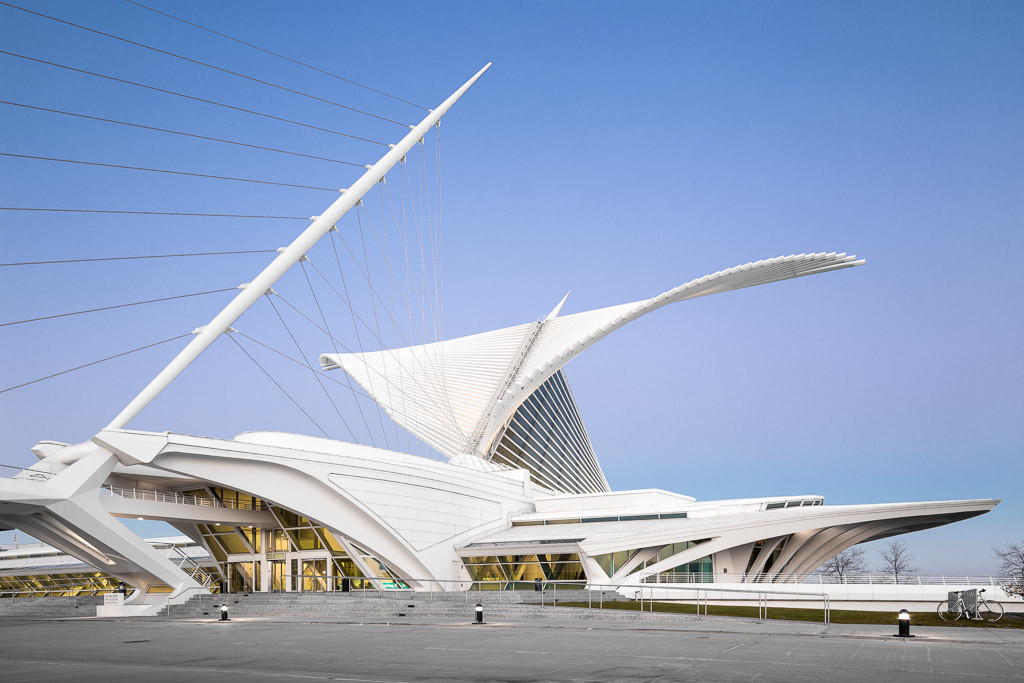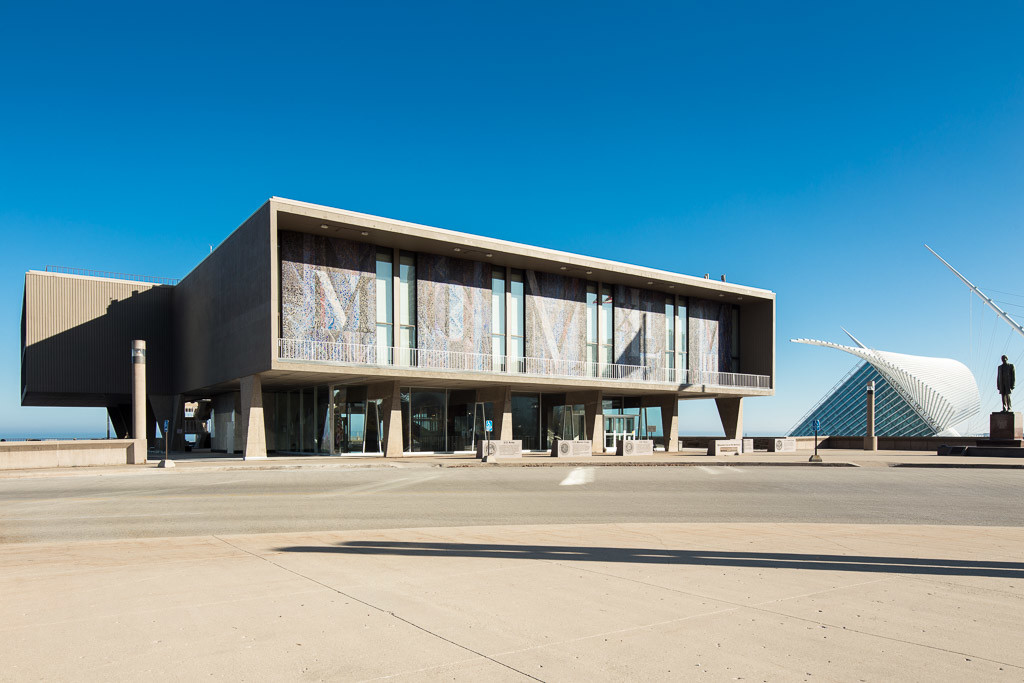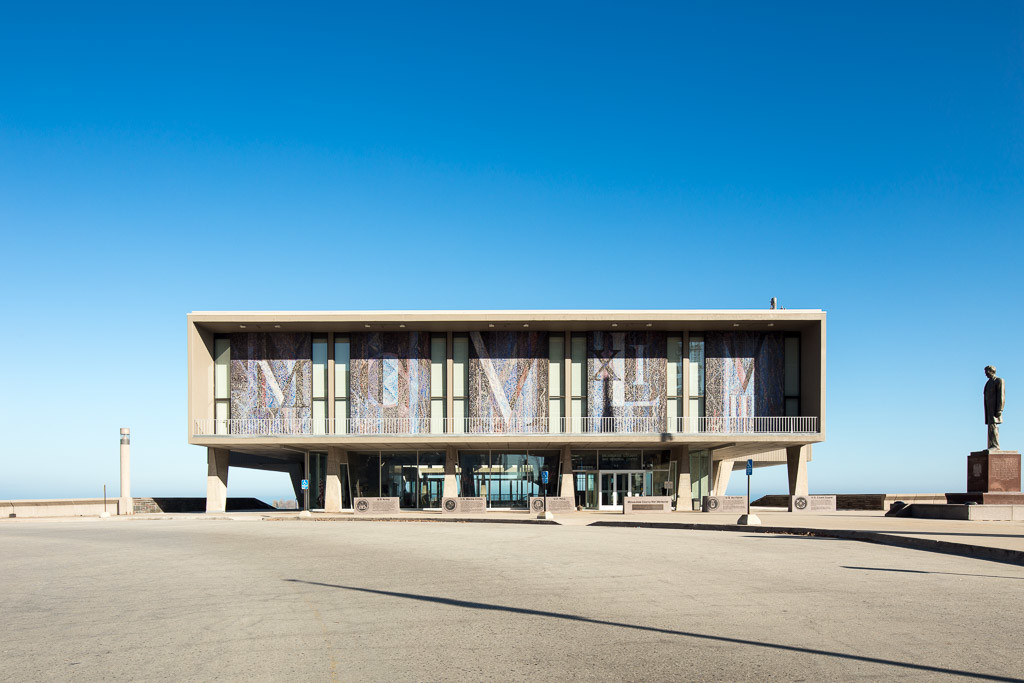Masterpieces in Milwaukee
November 7, 2015
The weather in the Midwest is like a box of chocolates…
With that said, it’s November and each day that it’s not snowing must be taken full advantage of. It was forecasted to be sunny and 70 on Wednesday (which it was), so I made a trip to Milwaukee to visit a couple landmark projects from two very different eras. My main objective was to see Santiago Caltrava’s first project on U.S. soil, which was his addition to the Milwaukee Art Museum that was completed in 2001. The museum is connected to Eero Saarinen’s Milwaukee County War Memorial that was finished in 1957 and is a stark contrast to Clatrava’s bright and airy work.
Calatrava’s design is eye-catching and attention-grabbing, but is surprisingly thoughtful and enjoyable to experience. The wing-like feature is referred to as Burke Brise Soleil and not only implies movement and flight, but the wings actually open and close each day in accordance with the museum’s operating hours. The front of the building leads to a pedestrian bridge that connects visitors to downtown Milwaukee just a few hundred yards away. During my visit, I noticed a lot of locals using the path as a jogging route and makes for a very active area.
Inside, the most notable feature is the cathedral-like Wendhover Hall. The space is enclosed by a 90 foot high glass wall, giving visitors an unforgettable view of Lake Michigan. The two “gallerias” along the the east and west ends strongly resemble Calatrava’s PATH Station in New York, further defining a visual language across his body of work.
Next door, Eero Saarinen’s structure borrows influence from Le Corbusier in it’s concrete forms and elevated stance. Although is is currently falling into a state of disrepair, the building is still enjoyable from most angles. The front facade is particularly impressive, as it features a mosaic by Edmund Lewandowski comprised of more than 1.4 million tiles.
